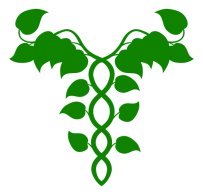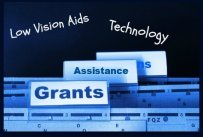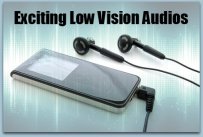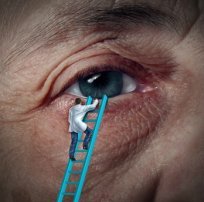Understanding the Glaucoma Eye Disease Types and Symptoms

Glaucoma eye disease is a common condition that affects your eye’s optic nerve. As time progresses, the disease gets worse and can cause buildup behind the eye. For the most part, glaucoma is an inherited disease and it usually doesn’t show up in patients until much later in life – usually after 50.
As the pressure increases, referred to as intraocular pressure, it can lead to damage inside the optic nerve – which is what transmits images you see to your brain. If the damage continues, you could suffer from a complete loss of vision. Also, without treatment, some patients have permanent blindness in just a few short years.
here are no early symptoms of glaucoma for most patients, because there is no recognizable pain. Therefore if you have a family history, you should consult your physician and have your eyes checked regularly to make sure you are not developing this debilitating eye disorder.
The Types of Glaucoma
There are two common types of glaucoma:
- Open Angle – Referred to as wide angle glaucoma, this the most common type of glaucoma eye disease. The eye will appear normal, but sudden fluid buildup prevents the eye from draining properly and creates a lot of pressure.
- Angle Closure – This is acute or chronic and is less common, but can cause unexplained, sudden buildup within the eye. The drainage is often poor because the drainage channel is too narrow.
Who is at Risk for Glaucoma?
This condition usually affects people over the age of 40, but I can be diagnosed in people as young as infancy. It is more frequently found in African Americans, but you may have an increased risk if:
- You already have poor vision
- You have a family history of glaucoma eye diseases
- You have diabetes
- You take medications known to cause glaucoma
Coping with Glaucoma
Once glaucoma is diagnosed there are treatment options, such as special eye drops and laser surgery. But for most patients, the vision loss is inevitable. Treatments don’t cure the disease, they just help slow down the progression. Some patients will suffer from low vision for years with their glaucoma. But, luckily there are new technologies to help those with low vision because of glaucoma eye disease. Assistive technologies, for example, help people see better and operate even at work – and in some cases, even drive.
For severe vision loss, some patients have found iPhone apps rather useful. Sight Compass, for example, is a premium iPhone app that gives users a detailed digital description of where they are and helps navigate them safely in their surroundings. You can find apps like Sight Compass and other visual assistance apps on Low Vision Technologies.

Other Common Types of Glaucoma
As you can see, glaucoma is actually a group of various related eye diseases. Other common forms are:
Pigmentary Glaucoma
Eye pressure occurs when little pigment granules that are located at the back of your iris clog your drainage canals. As they break free, they are carried by the eye fluid into the drainage canals.
Medications and conventional/laser surgery are common treatments.
Developmental Glaucoma
Glaucoma eye disease also affects children or infants.
It’s called congenital glaucoma when an infant is born with it. If a child develops the condition within a few years of birth, we call it infantile glaucoma. If it develops after age four or five, it’s called juvenile glaucoma.
Childhood Glaucoma Symptoms
- Enlarged cornea & eye
- Loss of vision
- Light sensitivity
- Overflow of tears (called epiphora)
- Hazy gray cornea (called corneal opacification)
Alternative Medicine Option
Glaucoma Eye Disease Apps
Yes! Technology can be so helpful...Click the App Store image below to check out the Glaucoma Calc app, a very simple mobile phone app that you can use to get an estimate on any risks you may have in developing glaucoma within 5 years if you have ocular hypertension.:
EyeBlurMaster: This app is effective for helping you to improve your vision. Click the App Store image below to read the full description about how this exciting app works!
As well, if you'd like to see my helpful low vision technology secrets I've put together after exhaustive research, I invite you to fill out the form below:
Get Exciting Low Vision Technological Secrets Sent To You...
Low Vision > Degenerative Eye Disease > Glaucoma Eye Disease


















